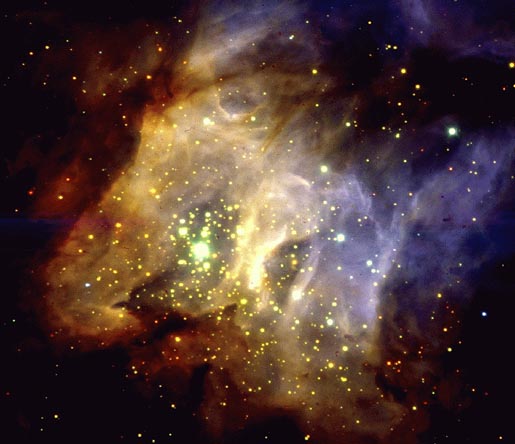Explanation: Star cluster RCW38 was hiding. This open cluster of stars is located about 5000 light years away towards the constellation of Vela. Looking there will not normally reveal most of the stars in this cluster, though. The reason is that the open cluster is so young that it is still shrouded in thick dust that absorbs visible light. This dust typically accompanies the gas that condenses to form young stars. When viewed in infrared light, however, the star cluster in RCW38 is revealed, because dust is less effective at absorbing infrared light. The above photograph was one of the first ever taken with the new Infrared Spectrometer and Array Camera (ISAAC) affixed to the 8.2-meter Very Large Telescope.
1999 2000 2001 2002 2003 2004 2005 2006 2007 2008 2009 2010 2011 2012 2013 2014 2015 2016 2017 2018 2019 2020 2021 2022 2023 2024 2025 |
Январь Февраль Март Апрель Май Июнь Июль Август Сентябрь Октябрь Ноябрь Декабрь |
NASA Web Site Statements, Warnings, and Disclaimers
NASA Official: Jay Norris. Specific rights apply.
A service of: LHEA at NASA / GSFC
& Michigan Tech. U.
|
Публикации с ключевыми словами:
reflection nebula - star formation - звездообразование - Области звездообразования - Пылевая туманность - Рассеянное скопление - инфракрасное излучение - молодые звезды
Публикации со словами: reflection nebula - star formation - звездообразование - Области звездообразования - Пылевая туманность - Рассеянное скопление - инфракрасное излучение - молодые звезды | |
См. также:
Все публикации на ту же тему >> | |
